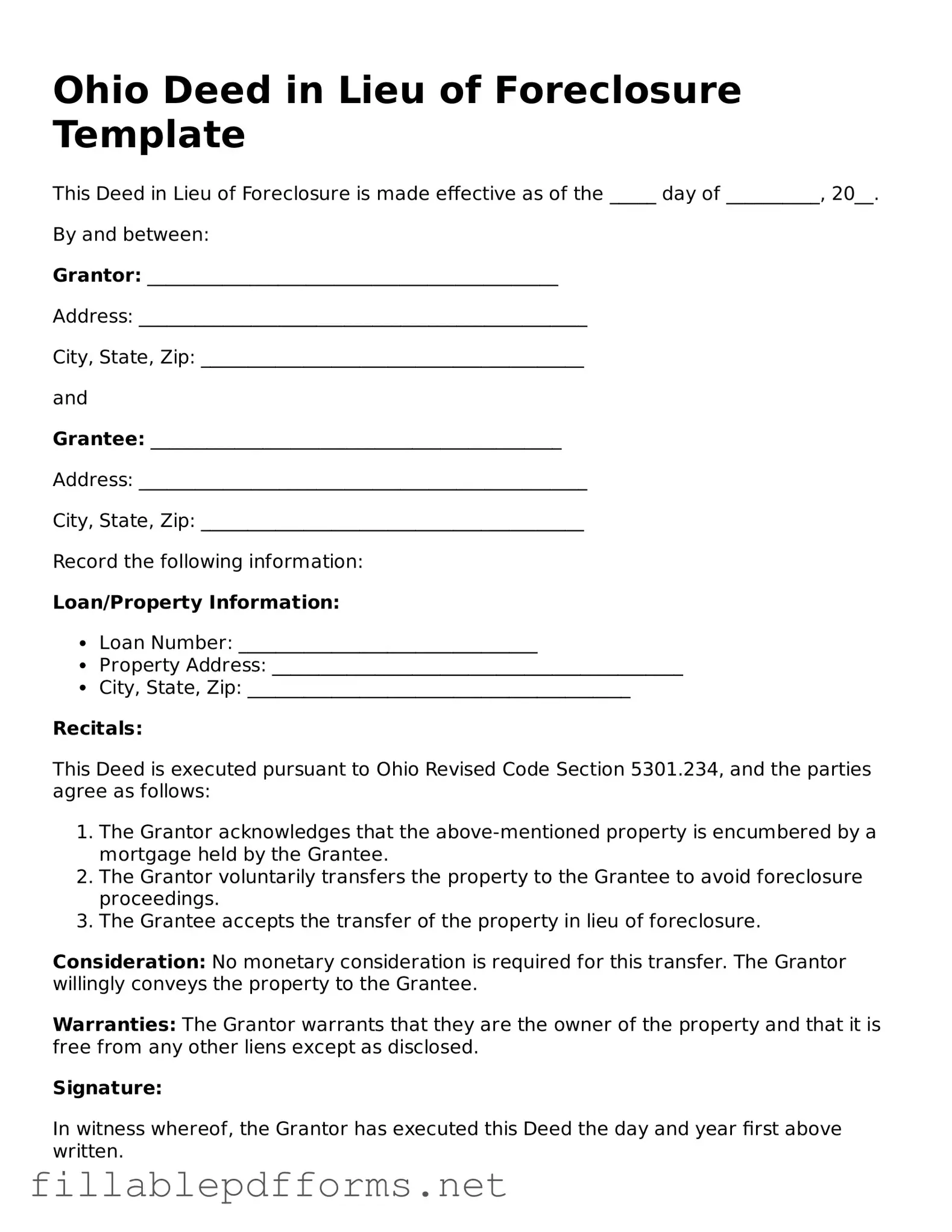Attorney-Verified Deed in Lieu of Foreclosure Form for Ohio State
The Ohio Deed in Lieu of Foreclosure form is a legal document that allows a homeowner to voluntarily transfer ownership of their property to the lender in order to avoid the lengthy and often costly foreclosure process. By opting for this alternative, homeowners can mitigate the negative impact on their credit and potentially resolve their financial difficulties more swiftly. Understanding the nuances of this form is essential for anyone facing the possibility of foreclosure in Ohio.
Launch Editor Here
